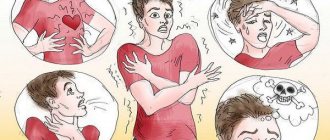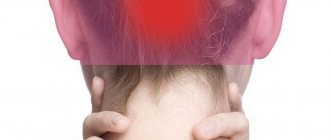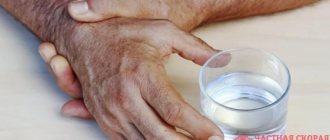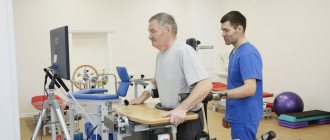Pain in the hand can be of a different nature - just as the reasons that caused it can be different. Thus, pain in the joints of the hands can occur due to inflammatory processes or degenerative changes in the joints or in the tissues that surround them. Pain in the arms can also be muscular or neurogenic in nature, and it is rarely possible to independently determine the cause that causes them.
That is why the answer to the questions “Fingers hurt, what should I do?” or “My arm hurts from shoulder to elbow, how to treat it?” sounds like this: “You need to seek medical help!” Only a specialist can order all the necessary studies and correctly make a diagnosis, according to which he will decide what to do in a particular case.
At CELT you can get advice from a specialist algologist.
- Initial consultation – 4,000
- Initial consultation with the head of the Pain Clinic - 4,500
Make an appointment
Do not shrug it off and think that pain in the hand will go away on its own, since it can be a sign of a systemic failure in the body, as well as a symptom of a disease. For example, pain in the left arm may be one of the symptoms indicating heart disease. That is why it is necessary to contact specialists as soon as possible!
Kinds
Discomfort in the hands may vary, since there are different types of pain:
- Burning. There is discomfort and burning, often a feeling of “goose bumps”.
- Aching. Periodically intensify and weaken, maybe 20-30 minutes.
- Spicy. With them, mobility decreases, muscle weakness and discomfort appear.
- Shots. They appear suddenly and last 2-3 minutes. This kind of pain is also called “cutting”.
Whatever the type of pain, it causes a lot of inconvenience. Therefore, it is important to consult a specialist in a timely manner in order not only to eliminate unpleasant symptoms, but also to prevent negative consequences.
What diseases can be associated with pain when raising your arm?
Most often, pain when raising the arm signals the presence of enthesopathy (damage followed by reactive inflammation at the junction of muscle tendons and ligaments with the bone surface) of the supraspinatus muscle. This symptom may indicate that the patient has:
- capsulitis (characterized by painful muscle stiffness in the shoulder girdle);
- shoulder dislocation;
- tendobursitis (characterized by inflammation of the joint capsules due to damage by tendon calcifications);
- lesions (deformation) of the rotator cuff (characterized by injury to the cuff due to non-standard or jerking movements, as well as delayed manifestation);
- intervertebral hernia (characterized by a pinched nerve, usually accompanied by pain in the neck);
- glenohumeral periarthritis syndrome (characterized by compaction and swelling of the periarticular soft tissues, which lose elasticity over time);
- diseases of internal organs (such as myocardial infarction, cerebrovascular accidents, pathologies of the lungs, gall bladder, etc.).
Causes
Pain in the hands appears due to:
- bone fracture;
- ligament damage;
- injuries;
- strong physical activity;
- prolonged stay in an uncomfortable position;
- diseases of the musculoskeletal system;
- damage to nerve trunks;
- diseases of the heart, blood vessels;
- tendon inflammation;
- hand joint diseases.
With arthritis, pain appears in the early morning. Even during rest, the discomfort does not go away. There may also be swelling, hyperemia, and fever. With osteoarthritis, the cartilage of the joints becomes thin over time and leads to pain during physical activity, crunching, and difficulty moving.
If the cause is bursitis, then the pain manifests itself in the elbows, where swelling appears. The temperature also rises and the skin becomes red. Rheumatoid arthritis causes pain in small joints and morning stiffness.
Main causes of joint pain
Diseases accompanied by intoxication
This is a wide range of acute and chronic diseases - acute respiratory viral infections, influenza, chicken pox, as well as chronic cholecystitis, chronic tonsillitis, oncological pathology, etc. The joint is affected by toxic products formed in the body. Joint pain is fleeting and disappears without a trace after the underlying disease is cured.
Rheumatoid arthritis
Arthritis is inflammation of a joint. The small joints of the hands and feet are affected, and subsequently the ankle, knee, hip, wrist and elbow joints may be involved. Acute pain occurs suddenly or gradually increases over several days. The affected joints swell and the skin around them turns red. A characteristic symptom is morning stiffness in the joints. Symptoms such as fever and rash are sometimes observed.
As the pathological process progresses, the pain becomes aching, and the stiffness of movement in the affected joints becomes persistent.
Rheumatic arthritis
Usually occurs 1-3 weeks after a sore throat or flu, but the connection with the infection may not be traced. It begins acutely and is accompanied by high fever. Large joints are symmetrically affected, they swell and become sharply painful. At the same time, heart tissue can be affected, which is much more dangerous than arthritis.
Gout
This is arthritis caused by the loss of small crystals of uric acid into the joint cavity. Usually the big toe is affected - more precisely, the joint farthest from the nail. Inflammation of other joints is also possible. The attack develops suddenly, often at night or in the morning. The pain is very severe, the joint and surrounding tissues swell. The duration of exacerbation ranges from several days to several weeks. After some time, the attacks are repeated. Nodes - tophi - appear in the joint area. As a result of the pathological process, the articular cartilage and ligamentous apparatus suffer, and joint deformation gradually occurs.
Reactive arthritis
Inflammation of the joint develops after some time against the background of chlamydia, pseudotuberculosis or any other infection. Small joints of the limbs (sometimes symmetrical) are affected; subsequently, large ones may also be involved. The symptoms are similar to gout. Sometimes these two diseases can be distinguished only by the results of a blood test: with reactive arthritis, C-reactive protein is detected, and with gout, an increased level of uric acid is detected.
Attacks alternate with remissions, changes in the joints are unstable, and in the intervals between attacks they can completely disappear. Complications rarely occur - the heart, kidneys and other organs may be affected.
Psoriatic arthritis
Sometimes it occurs without skin manifestations of psoriasis, which makes diagnosis difficult. It can be symmetrical or asymmetrical, affecting small (closer to the nail) and large joints, including intervertebral joints. In some cases, the symptoms resemble rheumatoid arthritis, in others - arthrosis or another disease.
Arthrosis
Premature wear and degradation of articular cartilage. Synonyms: osteoarthritis, osteoarthritis, deforming arthrosis. This joint disease is widespread. It affects people in old age, with excess body weight, most often women. Due to metabolic disorders (or due to injury), the nutrition of the articular cartilage deteriorates. The cartilage is destroyed, and other joint tissues also suffer.
The hip, knee, ankle joints and small joints of the fingers are affected. At first the pain is mild, but over time it becomes stronger. When the joints are loaded, the pain increases, and with rest it decreases. There is a crunch in the joints and swelling. Damage to large joints of the lower limb leads to gait disturbance. As the disease progresses, the range of motion in the joints decreases to the point of immobility.
Flat feet
With this pathology, both articular cartilage and ligamentous apparatus are affected, and pain in the feet can be severe.
Radiculitis (“radix” – root)
Occurs with osteochondrosis of the spine, when a reduction in the space between the vertebrae leads to compression of the spinal cord root. Depending on the part of the spine affected by the pathological process, pain occurs in the neck, chest or back. They can be very strong and radiate to the arm or leg, simulating a disease of the joints of the extremities.
Inflammation of periarticular tissues
The joint capsule, tendons or ligaments become inflamed, but the tissues in the joint cavity are not affected. This happens with bursitis, tendinitis, periarthritis.
Injury
Damage to the articular cartilage and ligaments heals slowly, so pain in the joint may persist for a long time after the injury. The resulting damage to articular cartilage and other tissues can become a trigger in the development of a degenerative process - arthrosis.
Functional joint pain
They are caused by spasm of the vessels supplying the joint due to disruption of the autonomic nervous system under stress.
Other reasons
Joint pain can also be accompanied by other, more rare diseases: systemic lupus erythematosus, systemic sclerosis, ankylosing spondylitis, hallux valgus, avascular necrosis of the femoral head and others.
You can find out the causes of joint pain in consultation with our specialists. Our clinic address: St. Petersburg, st. Bolshaya Raznochinnaya, 27 metro station Chkalovskaya
Which doctor treats you?
If you have unexplained pain in your arm, you should consult a neurologist. Who will do the treatment depends on the cause of the illness. You can immediately contact a traumatologist.
Pain in the arm, regardless of the nature of the pain syndrome (burning, sharp, aching or cutting), requires careful examination and close supervision of a specialist.
IMPORTANT! A person should not ignore this symptom or self-medicate, because the cause of pain in the arm can be associated with both muscle pathology and an inflammatory process that urgently needs to be stopped.
Make an appointment with a neurologist or traumatologist at the Kuntsevo Medical and Rehabilitation Center to determine the causes of the unpleasant symptom and eliminate it.
Sign up
Treatment methods
In our center you can undergo diagnostics - MRI, ultrasound. Research is performed after determining the location and nature of the pain. If necessary, additional blood tests are required to determine whether there are infectious and inflammatory diseases in the body.
The treatment method depends on the disease or injury that caused the pain. At the clinic, specialists prescribe the following treatment methods:
- Physiotherapy;
- Manual therapy;
- Reflexology;
- Physiotherapy;
It is up to the doctor to decide which procedures will be performed. Sometimes, when you have pain in your arms, you need to carry out several measures in combination. Experienced neurologists use effective therapy methods. Patients can perform diagnostics, undergo diagnostics and treatment without leaving the clinic.
Rehabilitation and lifestyle restoration
After treatment, patients need to recover. This is achieved using:
- maintaining moderate physical activity;
- balanced nutrition;
- compliance with the work and rest regime;
- taking vitamin and mineral complexes;
- maintaining correct posture;
- protection against hypothermia of joints and stress;
- correction of deformed joints;
- disinfection of wounds, scratches and abrasions;
- refusal of monotonous and monotonous work;
- timely treatment of infectious diseases;
- limiting alcohol consumption.
Lifestyle with pain in the hands
A healthy lifestyle is necessary, which consists of the absence of bad habits. To do this, it is important to give up alcohol and cigarettes. It is necessary to monitor your diet. The menu should not include fried, salty, spicy foods. You should drink more clean water and avoid coffee.
Moderate exercise is necessary. Moreover, you can choose running, exercise or swimming. Yoga is also suitable. Only with the right lifestyle can you maintain your health at a normal level. By contacting us, patients will be able to successfully undergo treatment and rehabilitation in one place.
Prevention
To prevent pain in the hands, you must adhere to the following recommendations:
- Avoid injury to the upper extremities. Before playing sports, you need to warm up well and do not neglect wrist protection during physical activity.
- Wear mittens or gloves during the cold season. Frequent hypothermia negatively affects the small joints of the hands and can cause the development of arthritis and pain in the hands.
- Do hand exercises. This is not necessarily a complex of physical therapy. It is enough to make normal rotational movements with your hand and stretch your fingers, hands, and wrist from time to time. Use wrist expanders.
- Avoid physical overexertion. For example, when working at a computer for a long time, it is recommended to use special pads for your hands, as well as take breaks during monotonous work.
- Regularly undergo medical examinations and monitor concomitant diseases. Even in the absence of complaints, it is necessary to undergo an examination of the body once a year. Do not wait for complications to develop, but seek medical help at the first symptoms of discomfort.
- Give up bad habits and eat a balanced diet. Caffeine and cigarettes constrict blood vessels, limiting blood supply to the joint tissues of the extremities. Alcohol increases the risk of developing osteoporosis. A lack of vitamins reduces the body's protective functions.
Following these recommendations does not require much effort and helps maintain mobility of your fingers and hands and overall health. Therapy for any disease in its early stages is easier, and the risk of complications is minimal. With an integrated approach and the support of doctors at the Dr. Bubnovsky Center, you can achieve lasting results in treatment - forget about pain in your hands and restore joint mobility.









